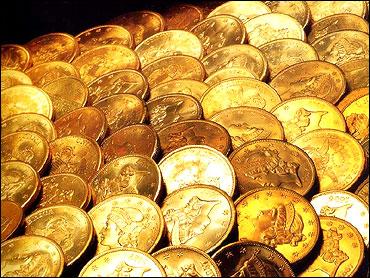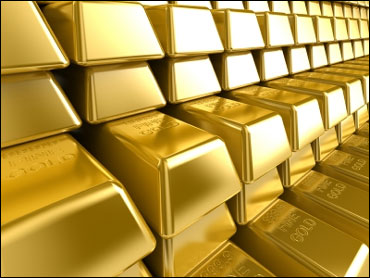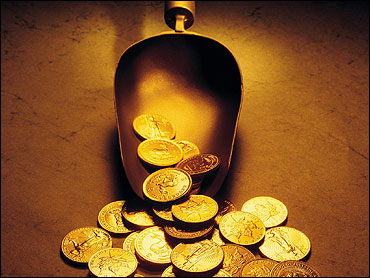N Sundaresha Subramanian & Mehul Shah in Mumbai
The rush for gold seems to be keeping pace with the sharp increase in prices of the yellow metal.
Consider this: India Post is targeting to cash on the Diwali season and sell about one tonne of coins in the next two months alone. During the whole of last year, India Post sold around half a tonne.
Around 700 post offices across the country would sell gold coins this year. In 2009-10, around 25,000 investors purchased gold coins from 500 outlets. This year, the number is already 40,000.
"While the price has been going up (it ended last week at Rs 26,860 per 10g), consumers are expecting even higher prices. We anticipate the festival season to be a roaring success," says Ajay Mitra, managing director-India, World Gold Council (WGC).
WGC is planning elaborate campaigns across the media and on-ground promotions beginning October 1.
Click on NEXT for more...
Gold rush in India has now become a sprint
India Post, which recently got into the selling of gold coins, has also ramped up capacity for the festival season. "India Post has added 200 outlets this year. Many are in the South. We are expecting good sales through this channel, too," says Mitra.
Over the last decade, gold has been one of the best investments for the Indian retail investor.
According to a JPMorgan report, India is home to more than 18,000 tonnes of gold (about 11 per cent of the global stock), worth about $1.1 trillion (versus an equity market cap of $1.2 trillion). Gold holdings are also more evenly distributed across Indian households as compared to stocks.
"The Indian retail investor, through thick and thin, has invested a substantial quantity in the best performing asset class in the last two-three years, which is gold. Indians always have this fascination for gold and rightly so.
It has done well for them," says Bharat Iyer, head of India equity research at JPMorgan.
"Even irrespective of whether it performs in a very robust manner, investors should keep putting a little bit into gold every time because it is an asset class with a lot of defensive quality.
I don't think that fascination is going to go away or it needs to go away," he adds.
Click on NEXT for more...
Gold rush in India has now become a sprint
As consumption of the most loved metal rises, concerns about safekeeping of the gold bought have begun to bother consumers. Globally, vaults holding bullion have been fast filling up.
The Swiss Precious Metals bullion vault in the 7.4-acre Singapore FreePort has seen demand rise this year.
Some reports say investors are interested in paying up to 1 per cent of the value of their gold holdings just to ensure they remain secure. Most local banks are running out of safety lockers, especially in cities.
However, Mitra says security is not as big a concern in smaller centres. "The crime rates are not as high as the big cities. Therefore, demand for safekeeping has not arisen in a major way, though there are some sporadic voices."
"People in the rural areas like to deal in gold. Gold and land are traditional stores of value and they prefer to keep their money in these rather than paper instruments," says an official.
Click on NEXT for more...
Gold rush in India has now become a sprint
With a good monsoon this year, rural demand is likely to remain robust, says Prithviraj Kothari of Riddhi Siddhi Bullion. "Demand in rural areas will peak after Diwali, when the new crops come to the market," he says. But, coin sales are still a fraction of the total demand.
Kothari says three-fourths of the demand still comes from jewellery and the rest from coins and bars. Mitra of WGC also says coins and bars are more popular in urban centres, where people use these forms of metal as an accumulator to convert them to jewels as and when the need arises.
Mitra says traditionally rural areas and smaller towns have been major consumers of gold. "More than 60 per cent of India's demand comes from these centres.
But, not much is known as the business is concentrated in some family-owned jewellery shops. In recent times, jewellers with large networks have penetrated these areas, which is creating news flow."
"While the price and prevailing high interest rates may keep off investors looking at one-year returns, demand will be kept high by the festival season and the marriage season that will follow," says Kothari.






article